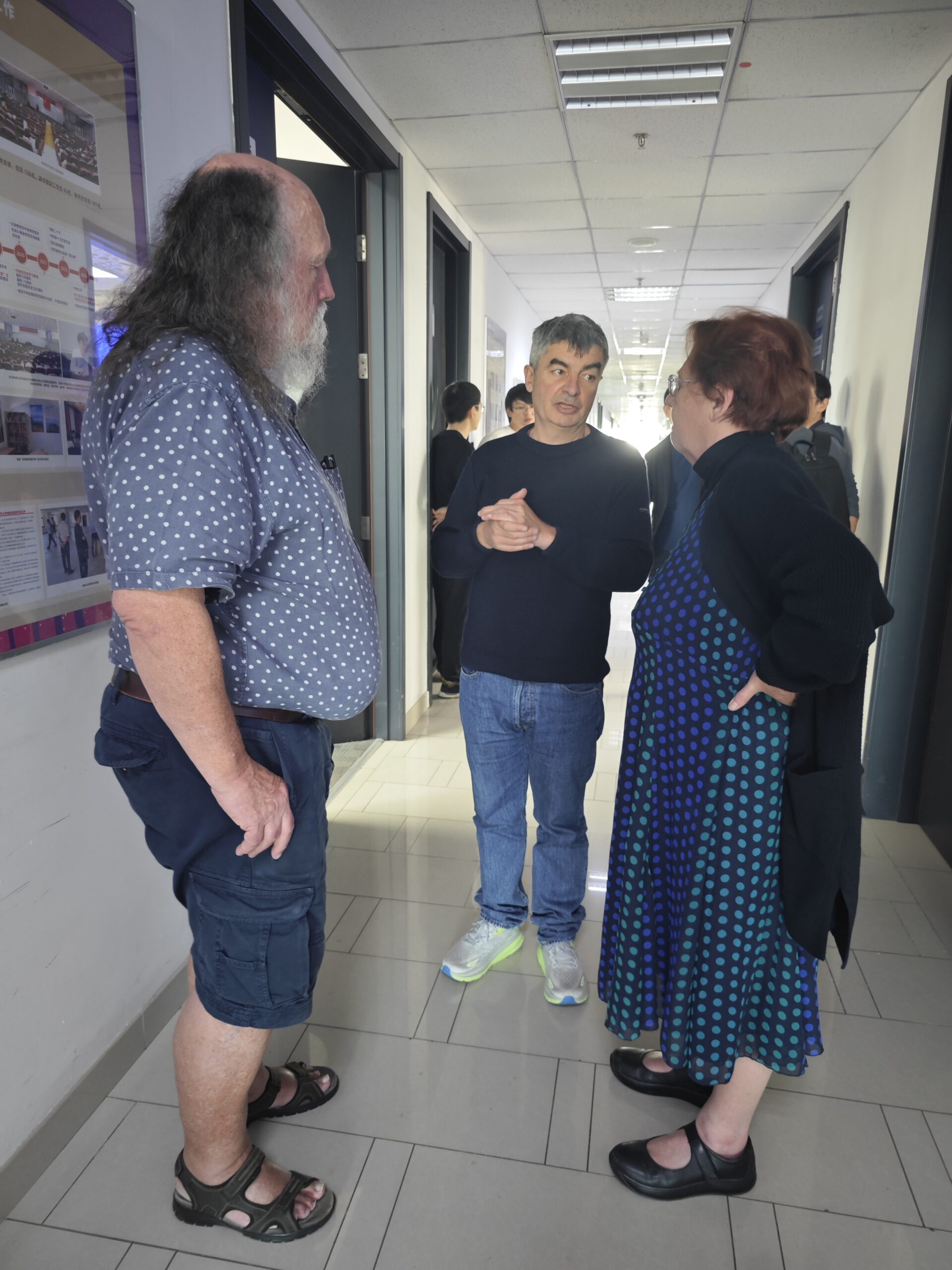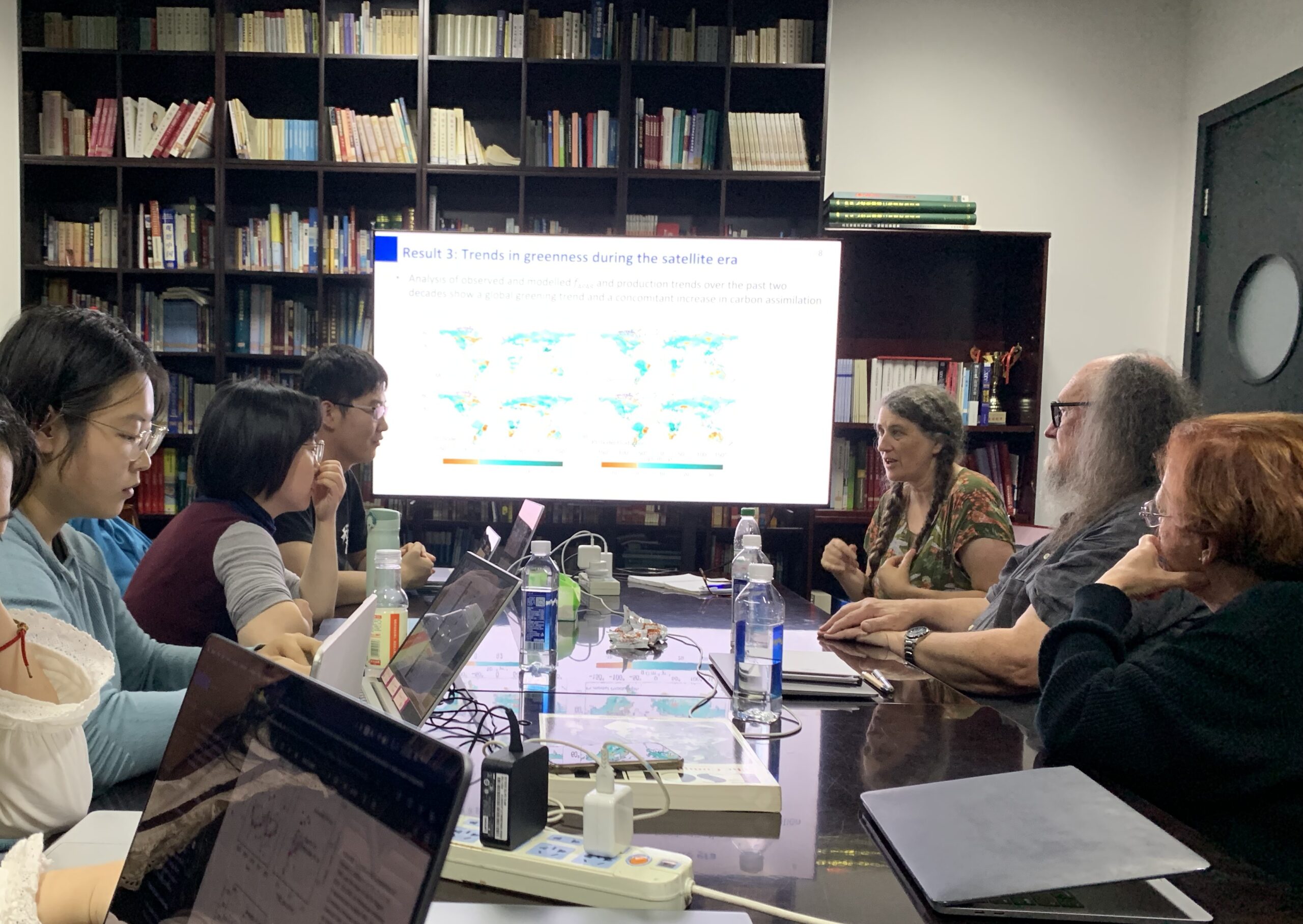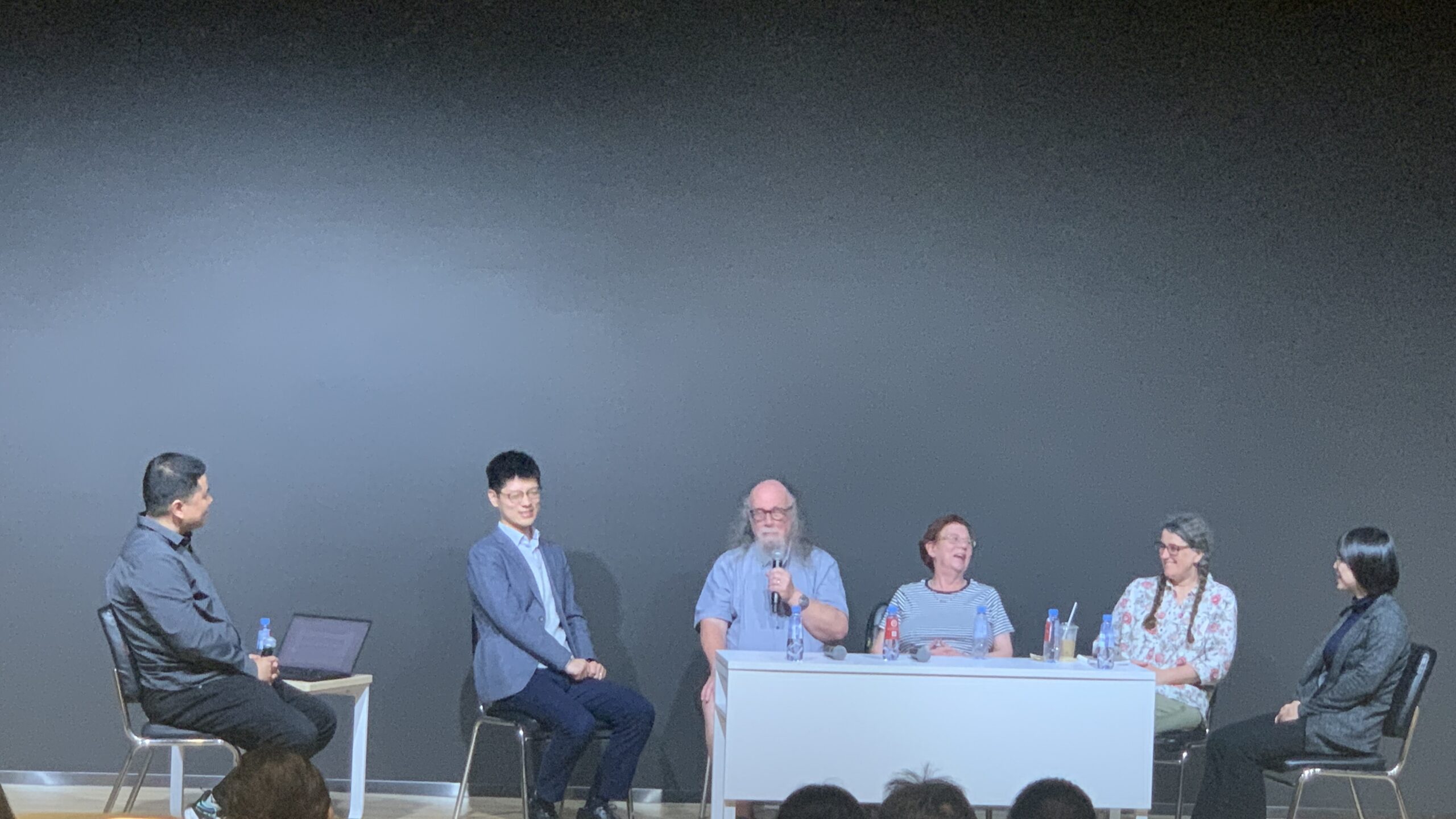SPECIAL group leader Sandy Harrison and LEMONTREE/Leverhulme Project co-PI Colin Prentice are currently spending their normal month as “Distinguished Visiting Professors” at Tsinghua University this October. The plan was to work intensively with the LEMONTREE students and postdocs based there. They didn’t expect that this would also be an opportunity to catch up with key colleagues from other parts of the world. However ….
On the very first day, they ran into Phillipe Ciais (LSCE, France). Phillippe leads the VESRI CALIPSO (CArbon Loss In Plants, Soils and Oceans) consortium and was in Tsinghua for a short visit to talk to Wei Li, after having been in Seoul visiting LEMONTREE PI Youngryel Ryu to discuss collaboration. This chance meeting enabled Sandy and Colin to catch up with developments in the CALIPSO project as well as to set up a meeting later this year to discuss a more rigorous collaboration between LEMONTREE and CALIPSO.

Figure 1: Colin, Sandy and Phillipe catching up on the CALIPSO project.
The next “brief encounter” was with Belinda Medlyn, from the Hawkesbury Institute for the Environment, University of Western Sydney, Australia. Belinda is a vegetation modeller focussed on improving the representation of key physiological processes in global vegetation models. She shares the LEMONTREE philosophy of testing processes one at a time against observations – particularly making use of the EUCFACE experiment run by the Hawkesbury Institute. Belinda was visiting a former postdoc, now back in China, but came to Tsinghua for an afternoon to meet with the LPICEA students and postdocs and hear more about ongoing work in LEMONTREE. She also joined Colin and Sandy at the one-day meeting on “Modelling Terrestrial Ecosystem Processes and Interactions” at Peking University on the 19th of October.

Figure 2: Belinda, Colin and Sandy with the LPICEA (Lab of Plant Interactions: Climate, Ecosystem, Atmosphere) team at Tsinghua University
This one-day meeting, was an opportunity to meet up with some other colleagues from the LPJ-GUESS community – most specifically Tom Pugh and Stefan Olin (both now at the University of Lund). Lund was the “birthplace” of the Lund-Potsdam-Jena consortium, led by Colin, that developed LPJ – and the cohort version of that model (LPJ-GUESS) was developed by one of his former students, Ben Smith. It was good to see where the model is going now. One highlight of the meeting was a (virtual) presentation by Matt Forest (Senckenberg, Germany) who is putting the P model into LPJ-GUESS to replace their current formulation of photosynthesis and stomatal conductance. EEO simplicity strikes again!

Figure 3: Panel discussion at the Modelling Terrestrial Ecosystem Processes and Interactions meeting at Peking University.
A final “surprise” encounter was with Dabo Guan, a colleague from University College London, another Distinguished Professor in the Department of Earth Sciences at Tsinghua University. Dabo focuses on climate change economics, and this meeting provided an opportunity for Colin and Sandy to discuss ways in which LEMONTREE modelling could be applied in the context of climate mitigation and adaptation. The PCrop model, developed by Shengchao Qiao, a former student at Tsinghua and now on the faculty of Hainan University, is a prototype EEO-based model that could be a useful platform for analysing future crop yields in this context.
The first 10 days of Sandy and Colin’s visit to Tsinghua have certainly been productive from a LEMONTREE perspective, but it seems as though Beijing is currently the centre of the universe as far as vegetation modellers are concerned and you can meet all of the key people here. We look forward to more updates on Sandy’s adventures in China when she returns to Reading!
